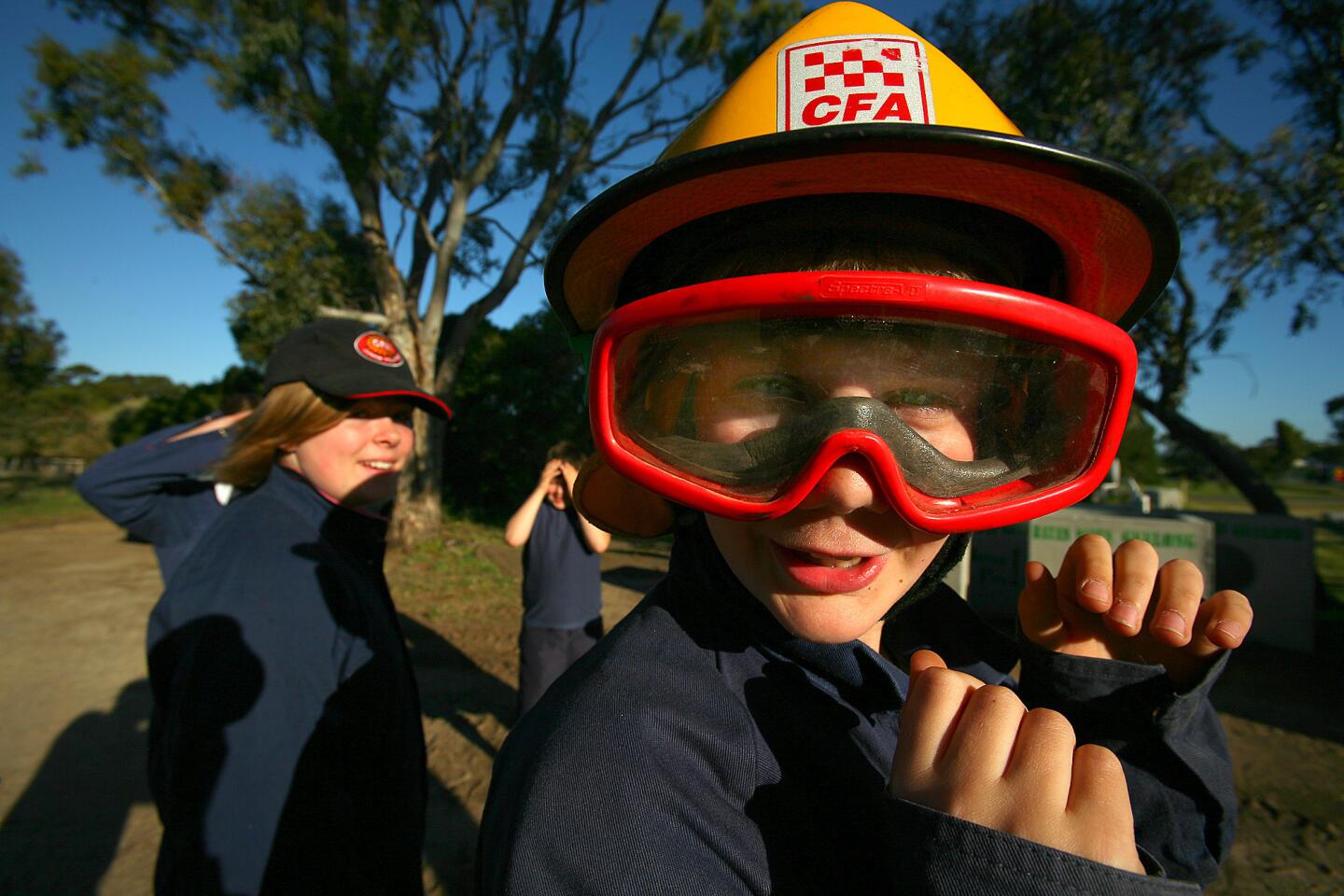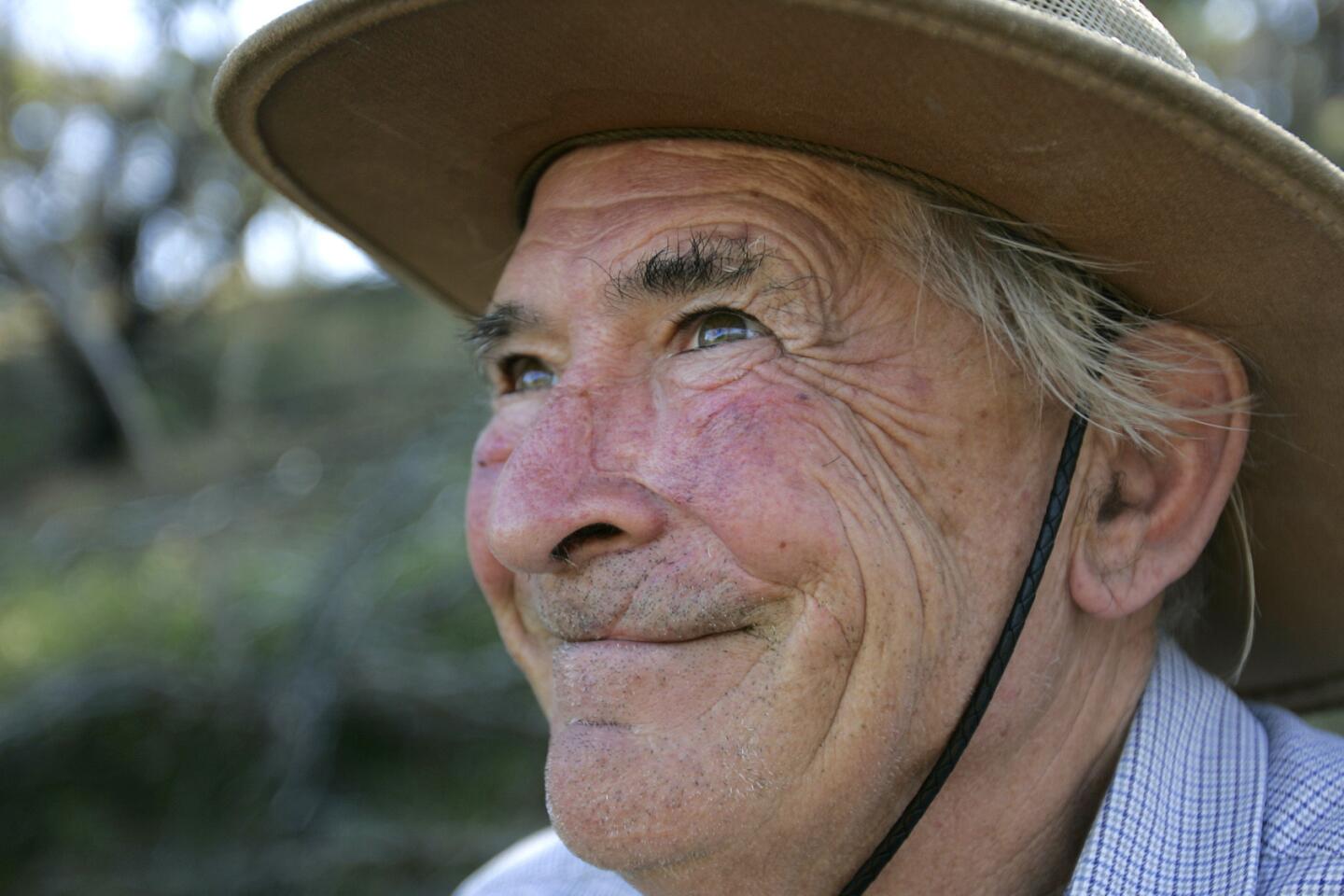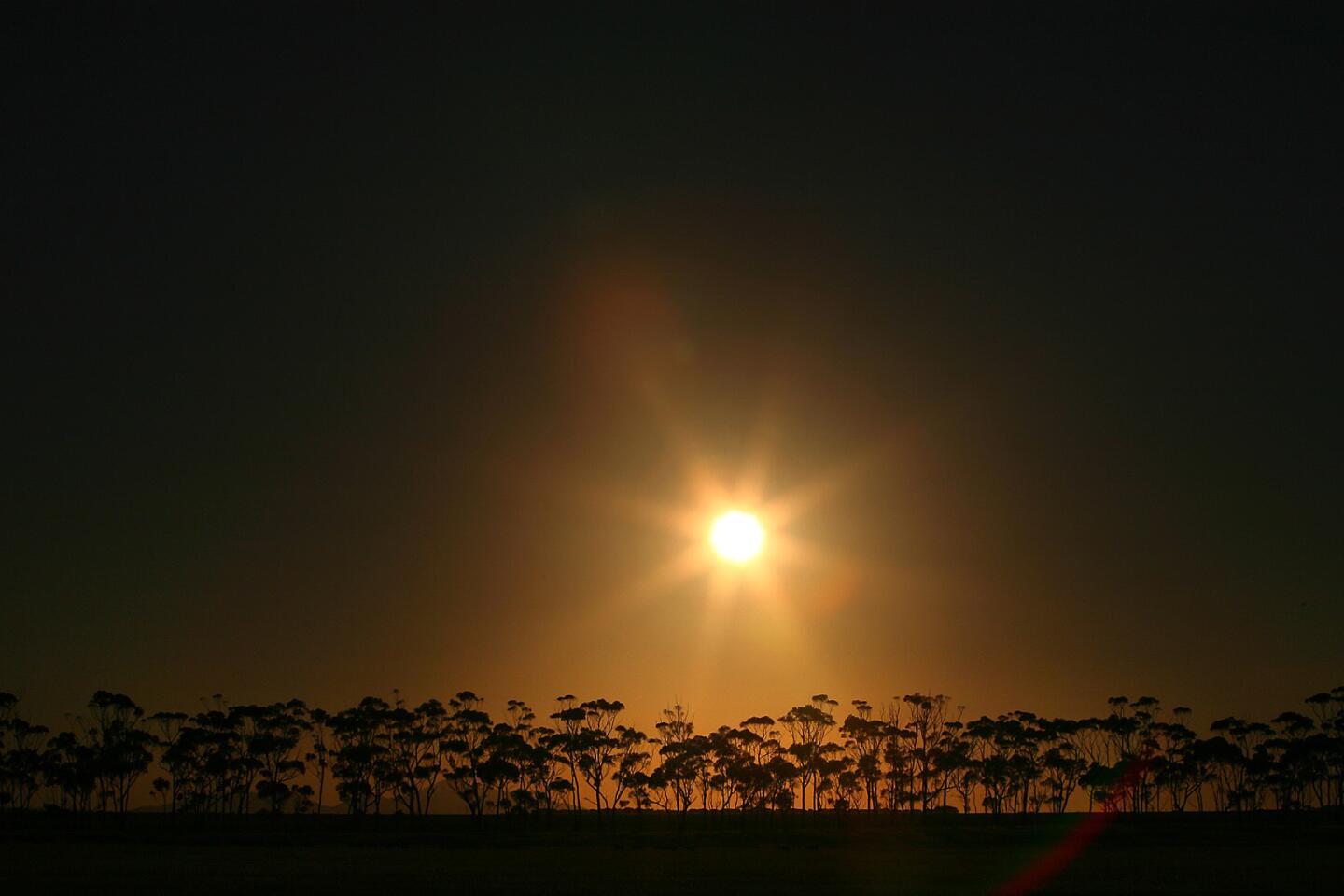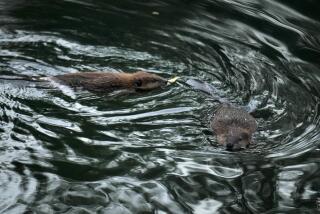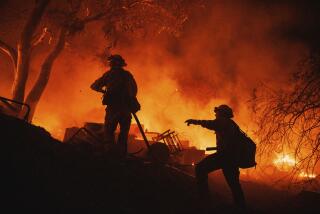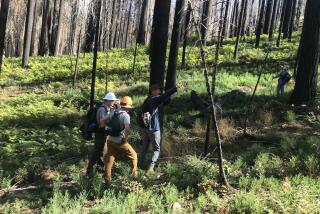Giving some fires free rein can be good for forests
A dispatcher’s voice crackles over Brit Rosso’s park radio. “One of our backcountry personnel is seeing smoke,” she says.
Rosso and Dave Bartlett conjure up a mental map. The smoke is coming from country that is lodgepole pine and brush, at an elevation of about 8,500 feet. “It’s a long way from anything,” Bartlett says.
His tone is calm, hopeful. This could be the first lightning fire of the summer to dance its way through park wilderness in an ancient Sierra ritual of flame, cleansing and renewal.
Rosso and Bartlett spent years as federal firefighters. Now they are fire managers for the National Park Service, more likely to herd and monitor flames than smother them.
“We have approximately a half-acre fire. The potential for spread is moderate,” the park dispatcher says.
Back in Rosso’s office, he and Bartlett spread a large park map across the desk. Bartlett points to a spot. “This is all rock.” Then to another spot. “This is all rock.”
They learn that a second lightning fire has broken out about 15 miles north of the first. The voice of duty officer Ben Jacobs sputters from the radio. “It’s kind of a no-brainer,” he says, suggesting that they don’t attack the flames. Some hiking paths may have to be closed, but otherwise the fires threaten nothing and, if they spread, could do some ecological good.
In the 1960s, the park service pioneered a retreat from the federal government’s war on wildfire, allowing supervisors to conduct controlled burns and let some lightning fires roam unmolested in remote areas. Sequoia and neighboring Kings Canyon National Park were the first to embrace the shift, which has spread to other parks and, to a more limited extent, the national forest system.
The government’s war on wildfire began in 1910. That August, infernos sparked by lightning and railroad locomotives burned 3 million acres of Idaho and Montana. In one 36-hour period called the Big Blowup, 78 firefighters died.
Federal agencies soon adopted an official policy of fire suppression. Wildfire was to be extinguished like any other untamed beast endangering humanity. In the 1930s, the 10 a.m. rule went into effect. U.S. Forest Service managers would make every effort to control blazes by 10 the morning after they were reported.
In 1944, the Smokey Bear campaign was born. Six years later, a burned bear cub rescued from a New Mexico wildfire became the living symbol of forest fire prevention.
But even at the time of the Big Blowup, there was dissension within forestry ranks about the wisdom of purging flames from the woods. In 1963, a report for the park service reaffirmed fire’s ecological importance.
A few years later, the agency softened its stance. It would still fight wildfires, but park managers could conduct controlled burns and let some lightning fires go unquenched. The Forest Service followed suit, dropping the 10 a.m. policy in 1978. In recent years, it has allowed more backcountry to burn unchecked. But aggressive attack remains the norm on most public lands.
Sequoia and Kings Canyon are home to groves of giant sequoias that need fire to thrive.
An armor of thick bark protects the trees from flames that send heat up into the branches, opening cones so they release their seeds. Fire chews small openings in the groves, letting in light for sun-hungry young sequoias. It recycles nutrients, fertilizing the soil.
But 40 years after the parks’ embrace of fire, it has not fully resumed its natural role here. Smoke is the main obstacle. People who live in down-wind communities don’t like to breathe it for weeks at a time.
“I think we could do a lot more” burning if there were no smoke problems, says Sequoia park fire ecologist Tony Caprio. He is hiking to a centuries-old stand of fir where two controlled burns have been conducted since 1990. “It’s gotten back to a more open condition, the way it was in the past,” he says.
Nearby, in an area that has not seen flames in more than a century, the growth is denser. Caprio points to young sequoias that look like ragged Christmas trees, stunted for lack of sunlight. Ecologists call them Oskars, after the character in “The Tin Drum” who stopped growing as a child.
On average, fire now blackens no more than 10,000 acres a year in Sequoia and Kings Canyon parks. Caprio guesses that is 10 times what burned when fire suppression was in full force. But it is less than half the average acreage that flames would have swept through before settlement, before the Sierra’s natural cycle of frequent, creeping fire was thwarted.
More to Read
Start your day right
Sign up for Essential California for news, features and recommendations from the L.A. Times and beyond in your inbox six days a week.
You may occasionally receive promotional content from the Los Angeles Times.
